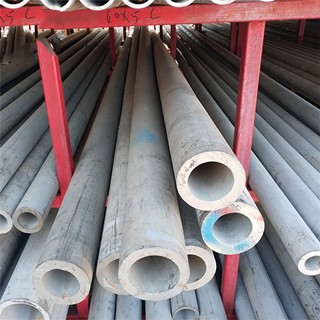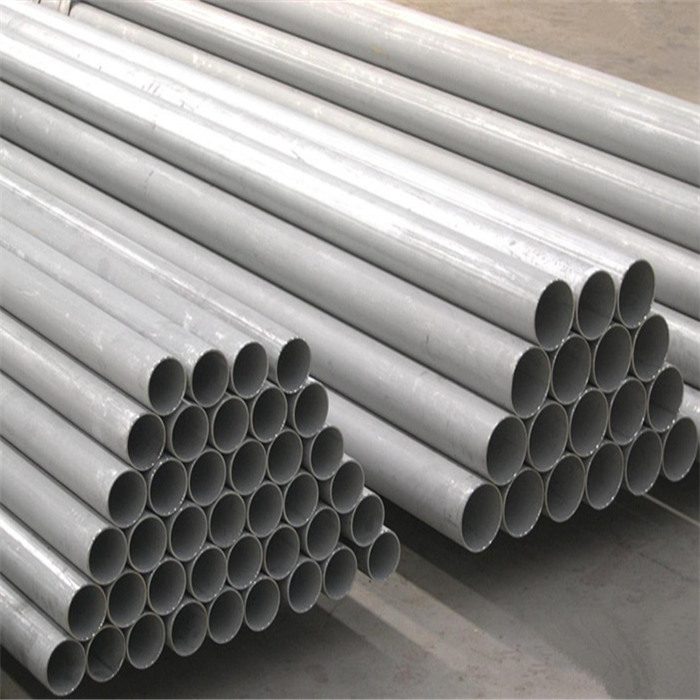420 Stainless Steel Seamless Tubes ASTM Stainless Steel Tubing
Overview
420 stainless steel pipe is a grade of stainless steel produced in accordance with the American ASTM standard (ASTM A276-2006 stainless steel bar and profile). ASTM A276 420 1.4021 Stainless Steel Type 420 Stainless Steel provides both outstanding corrosion resistance and exceptional wear resistance. To obtain the best possible strength and wear resistance, oil quenching alloy 420 at a temperature between 1800° F and 1950° F. Alloy 420 Stainless Steel is commonly used in dental and surgical instruments, cutlery, plastics molds, pump shafts, steel balls, and numerous hand tool.
Because of its air hardening properties, type 420 Stainless Steel is not often welded, although, it is possible. When welded with stainless steel type 420, preheat the steel to a temperature between 300° F and 400° F. After welding, temper the work piece at temperature for two hours. When hot working, it is recommended to gradually raise the temperature to 1400° F and then gradually raise the temperature to anywhere from 2000° F to 2200° F. While working, avoid letting the work temperature drop below 1600° F by frequently reheating the steel. To prevent cracking, furnace cool the work piece slowly after working. Any extreme cold forming will cause alloy 420 Stainless Steel to crack, but it can endure minor cold work.
Chemical Composition (%)
| C Carbon |
Mn Manganese |
P Phosphorus |
S Sulfur |
Si Silicon |
Cr Chromium |
| 0.15 | 1.0 | 0.04 | 0.03 | 1.0 | 12.0-14.0 |
Mechanical Properties
| Tempering Temperature (°C) | Tensile Strength (MPa) | Yield Strength 0.2% Proof (MPa) |
Elongation
(% in 50mm) |
Hardness Brinell (HB) | Impact Charpy V (J) |
| Annealed * | 655 | 345 | 25 | 241 max | – |
| 204 | 1600 | 1360 | 12 | 444 | 20 |
| 316 | 1580 | 1365 | 14 | 444 | 19 |
| 427 | 1620 | 1420 | 10 | 461 | # |
| 538 | 1305 | 1095 | 15 | 375 | # |
| 593 | 1035 | 810 | 18 | 302 | 22 |
| 650 | 895 | 680 | 20 | 262 | 42 |
Physical Properties (annealed condition)
| Grade | Density (kg/m³) | Elastic Modulus (GPa) | Mean Coefficient of Thermal Expansion (mm/m/°C) |
Thermal Conductivity (W/m.K) |
Specific Heat 0-100°C (J/kg.K) |
Electrical Resistivity (nW.m) | |||
| 0-100°C | 0-315°C | 0-538°C | at 100°C | at 500°C | |||||
| 420 | 7750 | 200 | 10.3 | 10.8 | 11.7 | 24.9 | – | 460 | 550 |


Alternative Grades
| Grade | Why it might be chosen instead of 420 |
| 410 | Only a lower hardened strength is needed. |
| 416 | High machinability is required, and the lower hardened strength and lower corrosion resistance of 416 is acceptable. |
| 440C | A higher hardened strength or hardness than can be obtained from 420 is needed. |
| “specials” | Variations of 420 are available to special order. These offer higher hardness, corrosion resistance and machinability for particular applications. |












-2.jpg)




